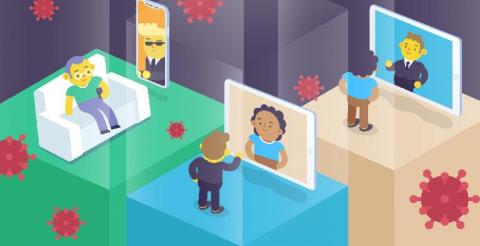Teams | Collaboration | Customer Service | Project Management
Latest Posts
Top 5 Strategies for Effective Organizational Communication
Effective organizational communication is crucial for any successful business. Not only will it lead to more effective outcomes, but it will also help to boost employee engagement, collaboration and workplace satisfaction. Organizational communication refers to all types: from verbal to written, from formal to informal. Making sure that you have an effective strategy is key to helping your business thrive. Here are 5 key strategies to help you improve your organizational relationships.
Kanban Project Management: What You Need to Know About Its Efficiency
If you’ve been collaborating with coworkers remotely, you’re likely familiar with project management systems centered around Kanban boards. After all, they’re one of the most efficient ways to organize your workflow. It’s the sheer efficiency that drove Chanty to develop its own native Kanban feature, but we can talk about that later.
How Self Organization Impacts Work Results
Being organized and having a work ethic may increase the productivity of your performance. It also helps reduce stress and tensions at work because you have everything planned out, and you deliver top quality services. But what are the most important elements of self-management at work? And, most importantly, how do your organization techniques impact your performance. In this article, you’ll find key aspects of self-organization along with some tips to become better at planning your work.
How Failure to Communicate Almost Cost These Businesses Everything
Communication is the key to any healthy relationship. You wouldn’t expect your loved ones to read your mind, would you? (Ahem..at least not all of the time) So why should your customers and employees have to do all of the guesswork? The single biggest mistake most companies make is the failure to communicate, losing their customers’ interest, and sometimes even their trust. And without internal communication with their team, businesses would simply cease to exist.
10 Brainstorming Tools to Improve Teamwork
Does your small business have remote workers? Or are you allowing your employees to work from home owing to the pandemic? You are not alone. In fact, 57% of small business owners are considering allowing their employees to work from home post-pandemic. While doing remote work is achievable and more productive, according to studies, you need to implement some effective brainstorming tools to facilitate creativity and improve teamwork.
Collaboration in Remote Teams: 3 Things That Make a Difference
Working from home is a comparatively new trend that started to gather momentum with the advent of digital technologies. The previous five years saw a 44% surge in remote employment, which is explained by two major factors. The first is the growing mobility of the workforce, 40% of which are expected to go exceedingly mobile globally by 2022. In the developed countries, this ratio is likely to reach the astounding three-fourths. No less fundamental is the impact of COVID-19.
Why Team Collaboration is the Key to Customer Loyalty
Team collaboration serves customers holistically. So customers become loyal. Businesses that get it will enjoy loyal customers while others struggle. In one study, 86 percent of business executives said that lack of collaboration or poor communication causes workplace failure. Employees agree more. In that study, 97 percent of employees say that lack of team alignment impacts goals and projects negatively. It doesn’t matter if you aim to win more loyal customers or double your revenue.
How to Run the Perfect Virtual Meeting
Remote teams are not new. However, they have been in the minority in most industries until recently. But due to the ongoing COVID-19 pandemic, remote working has become the norm for millions of people across the United States and all over the world. This new status quo looks to continue for the foreseeable future. Remote working has its benefits, but also comes with a unique set of challenges. In particular, working from home can be isolating, and people can struggle with productivity.
COVID-19 Has Changed the Business Communication Game - Here's How to Adapt
They say COVID-19 has changed the world forever and business communication is no exception. Remote work is becoming a new normal making employees set up their home offices and bring all the work communication online. Whether we are communicating with our team at work or with customers and partners, nothing is the same any more. Naturally, businesses face a great set of challenges starting with the lack of human interaction to ineffective online tools that don’t cater to their needs.











